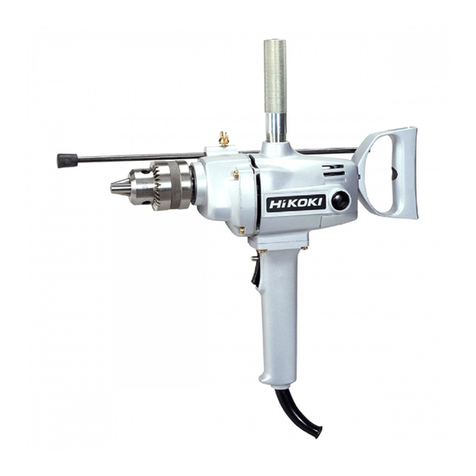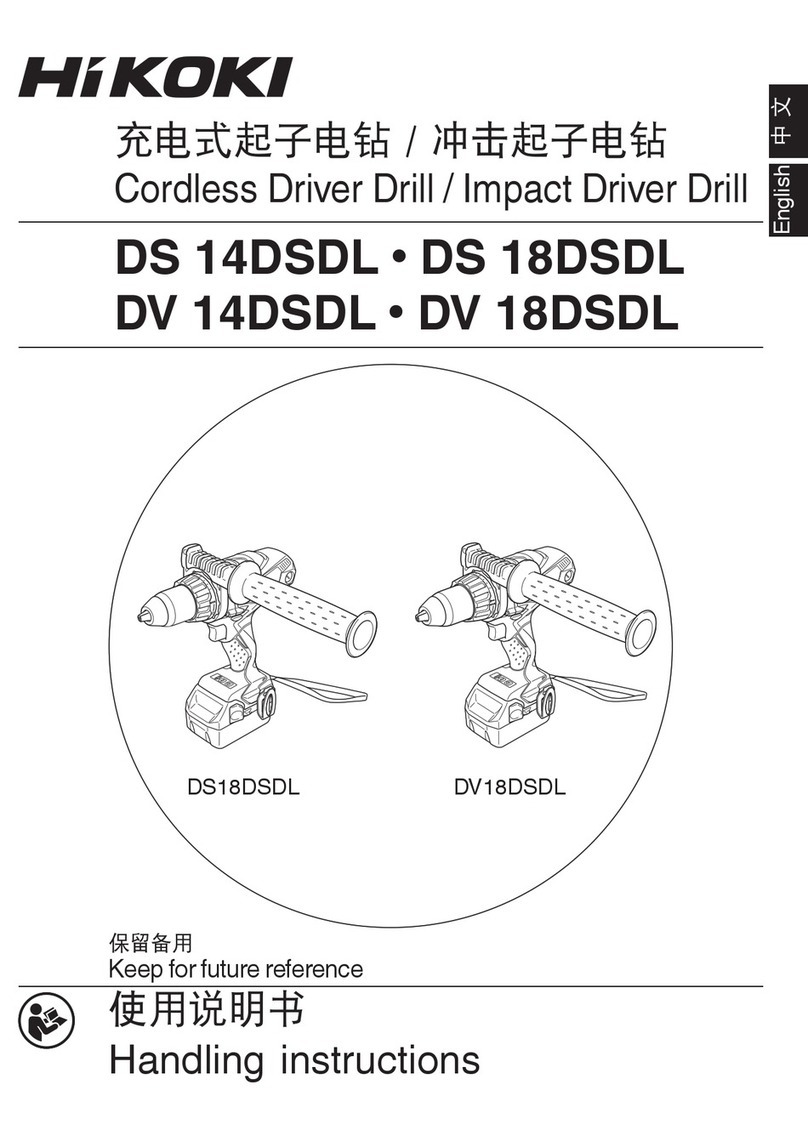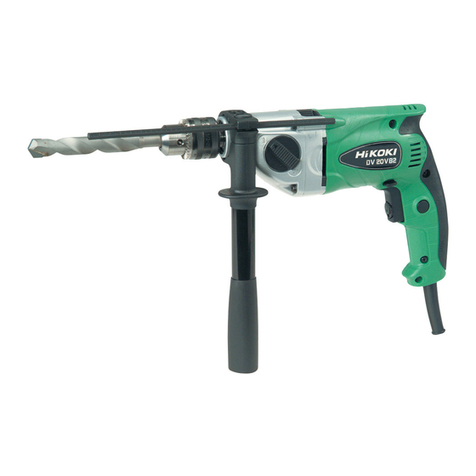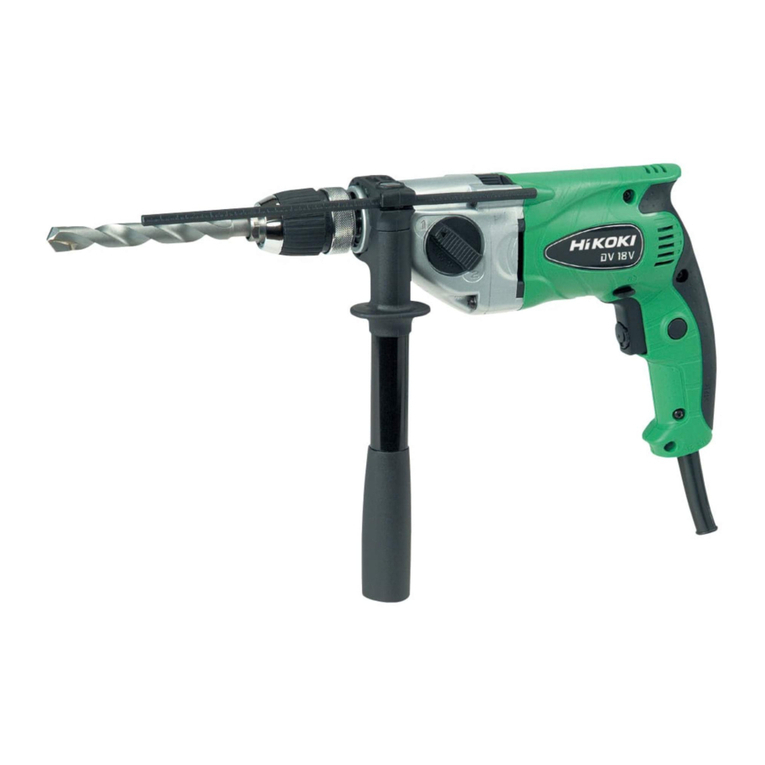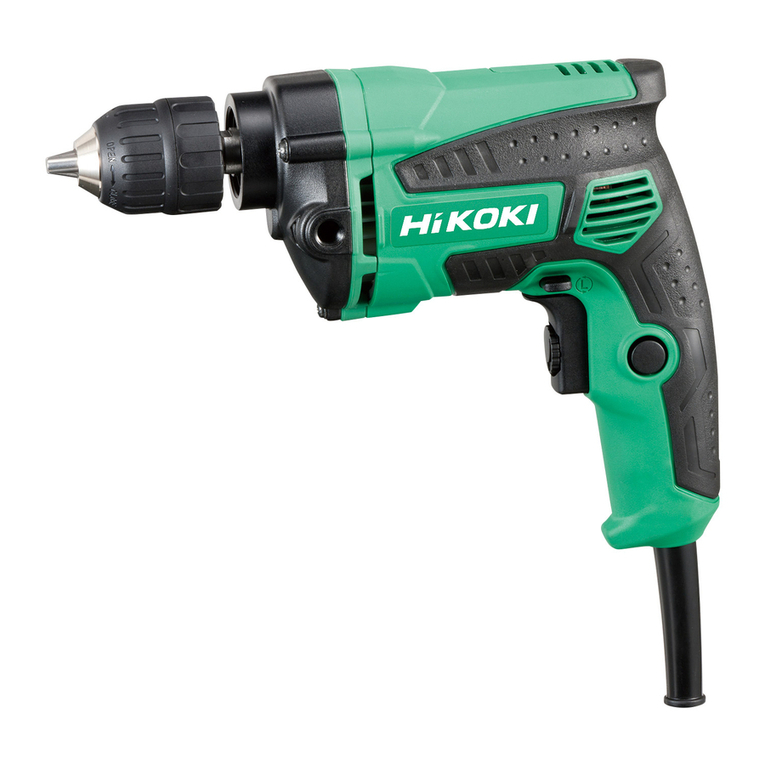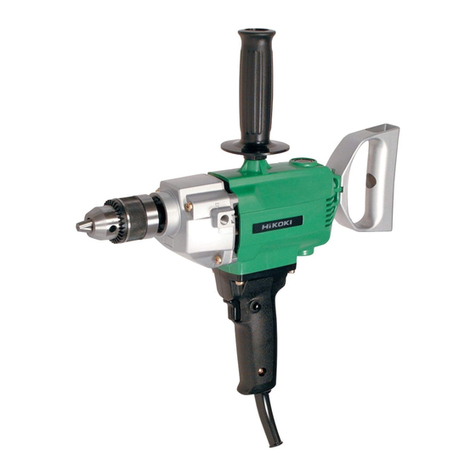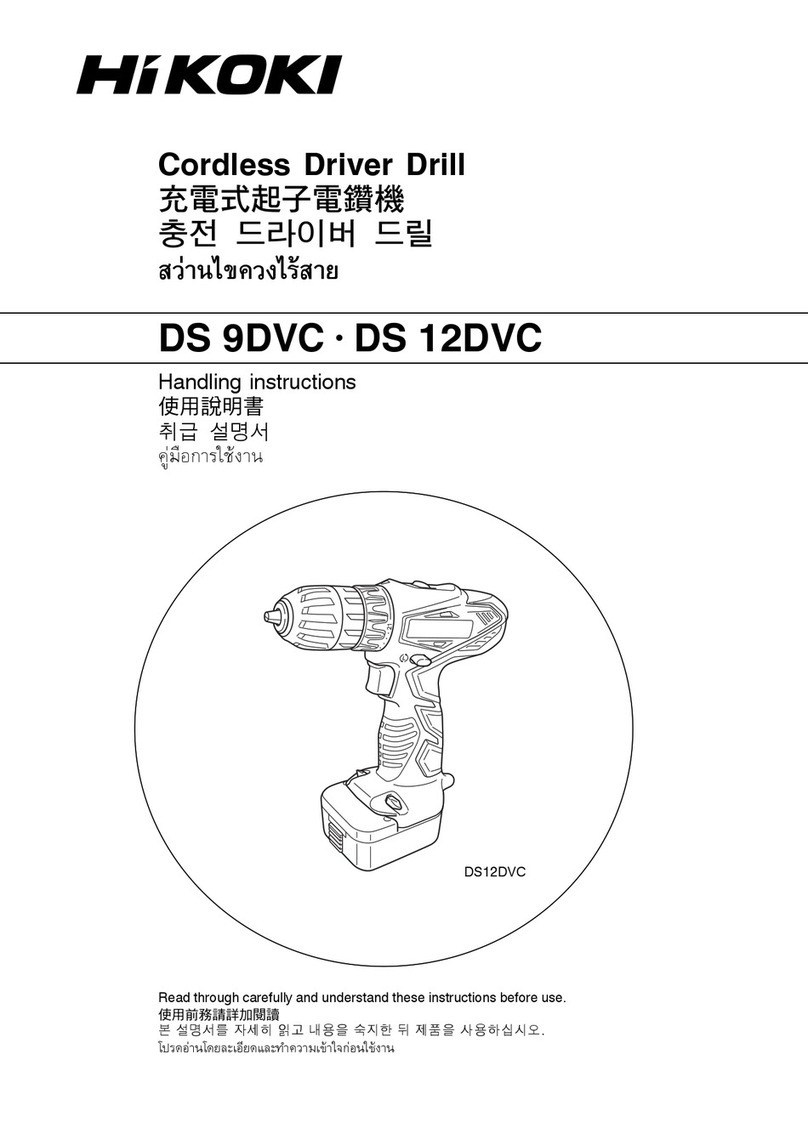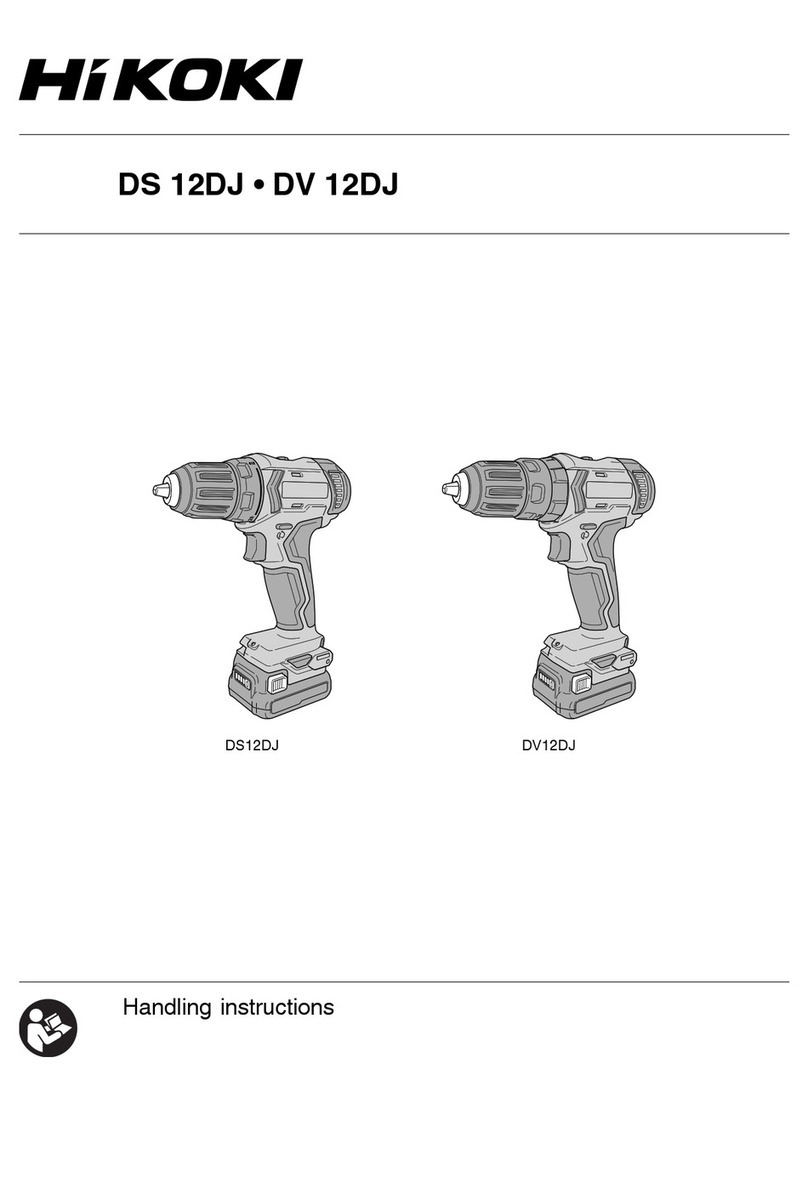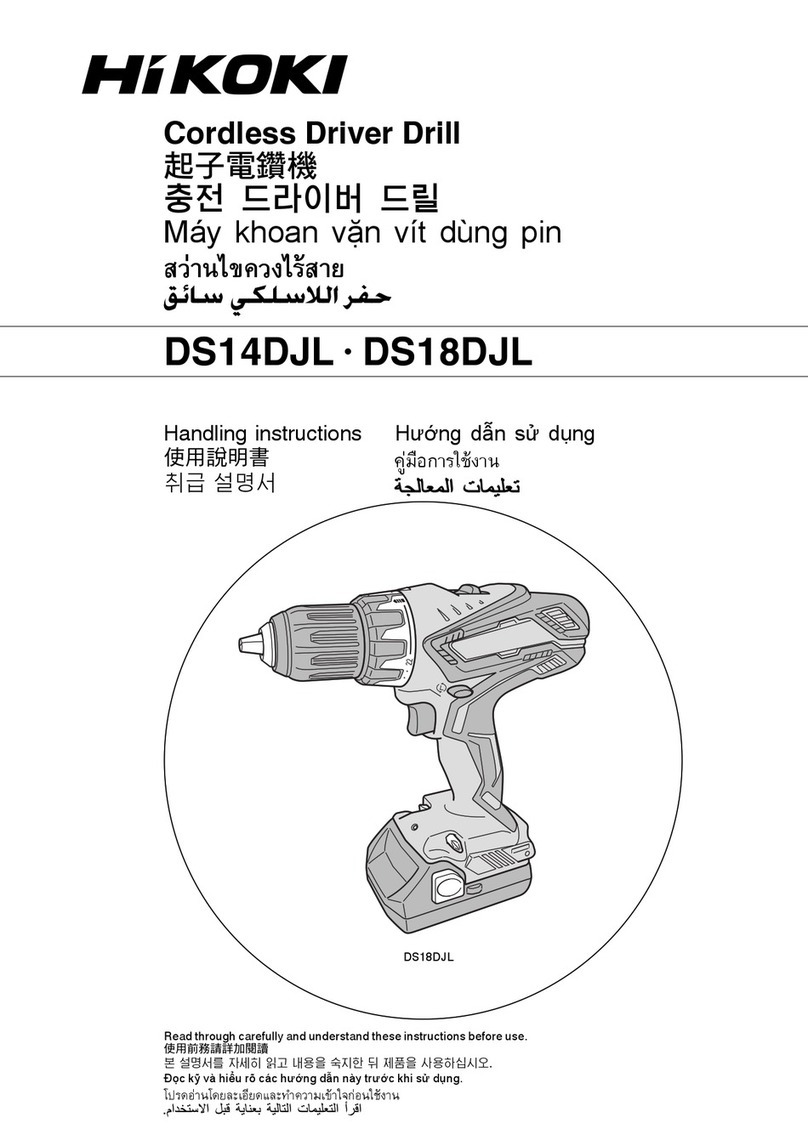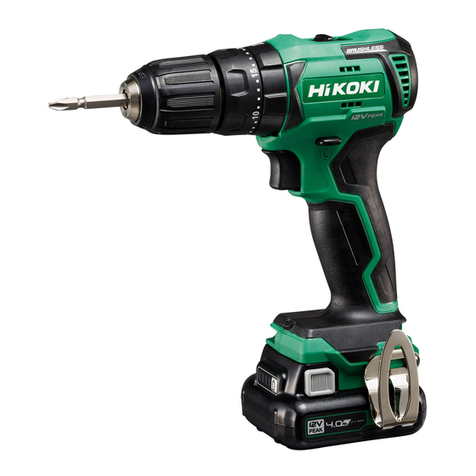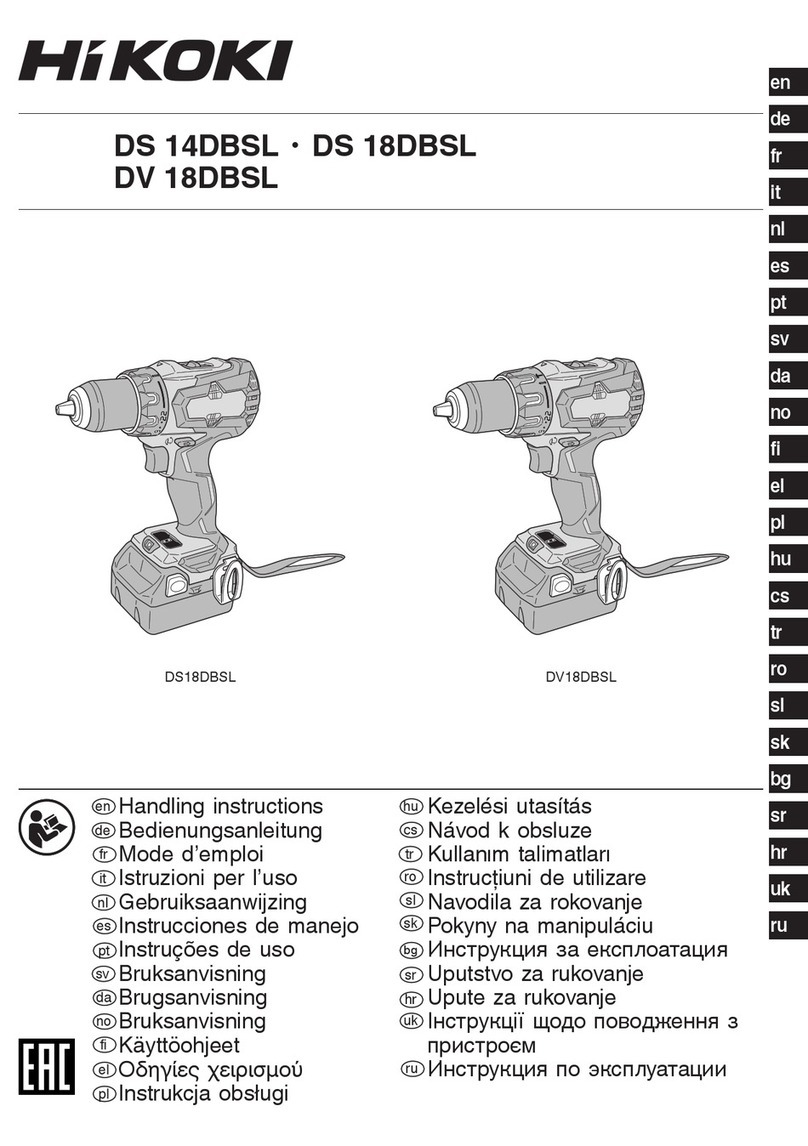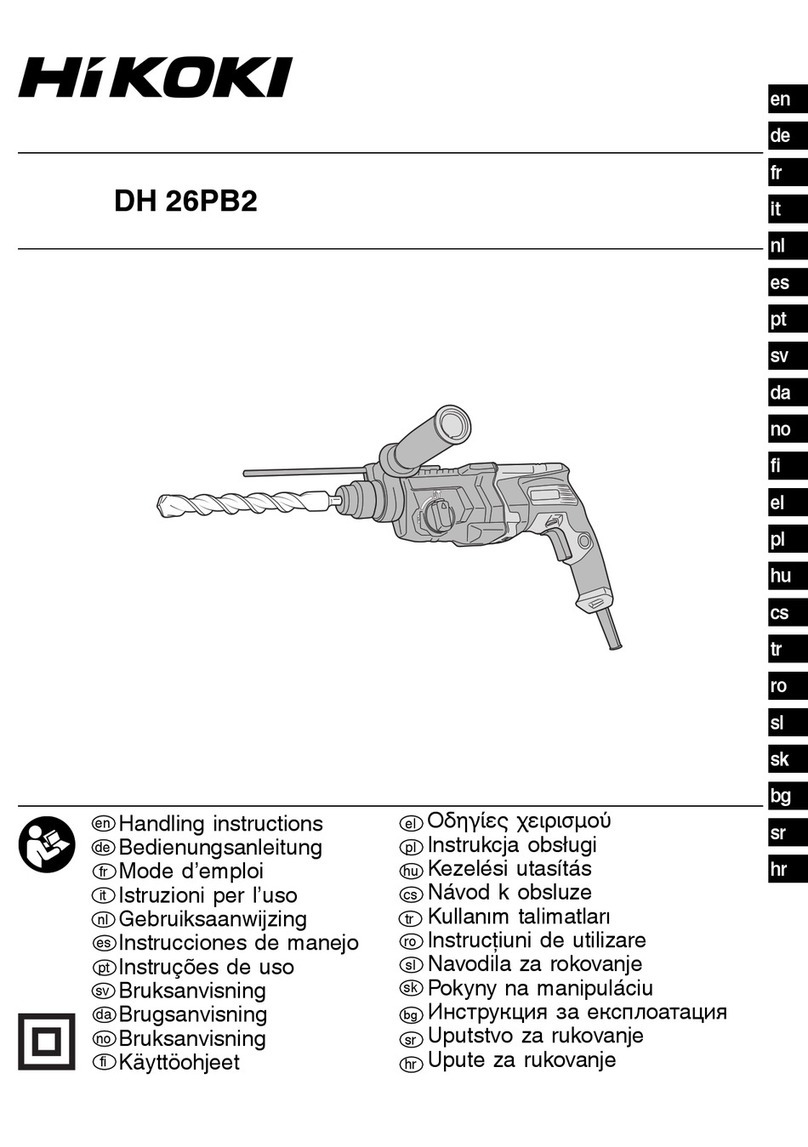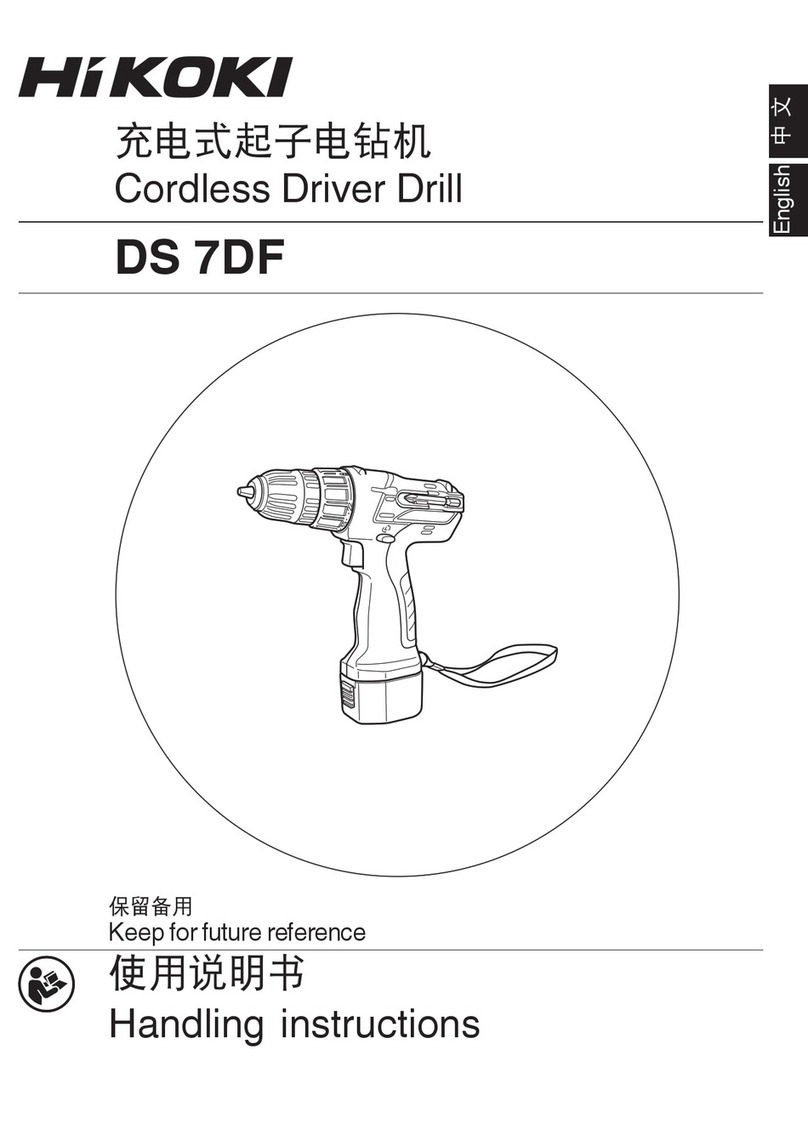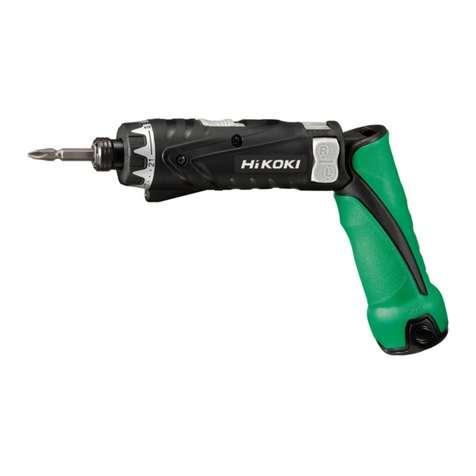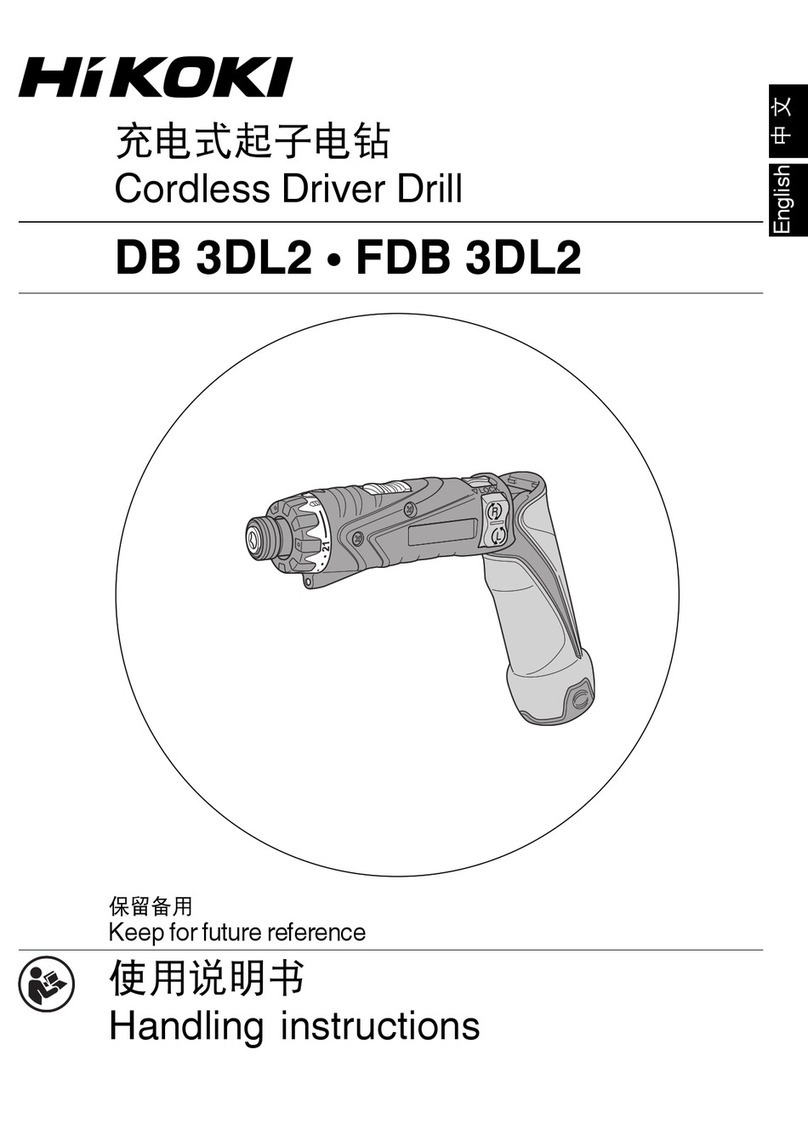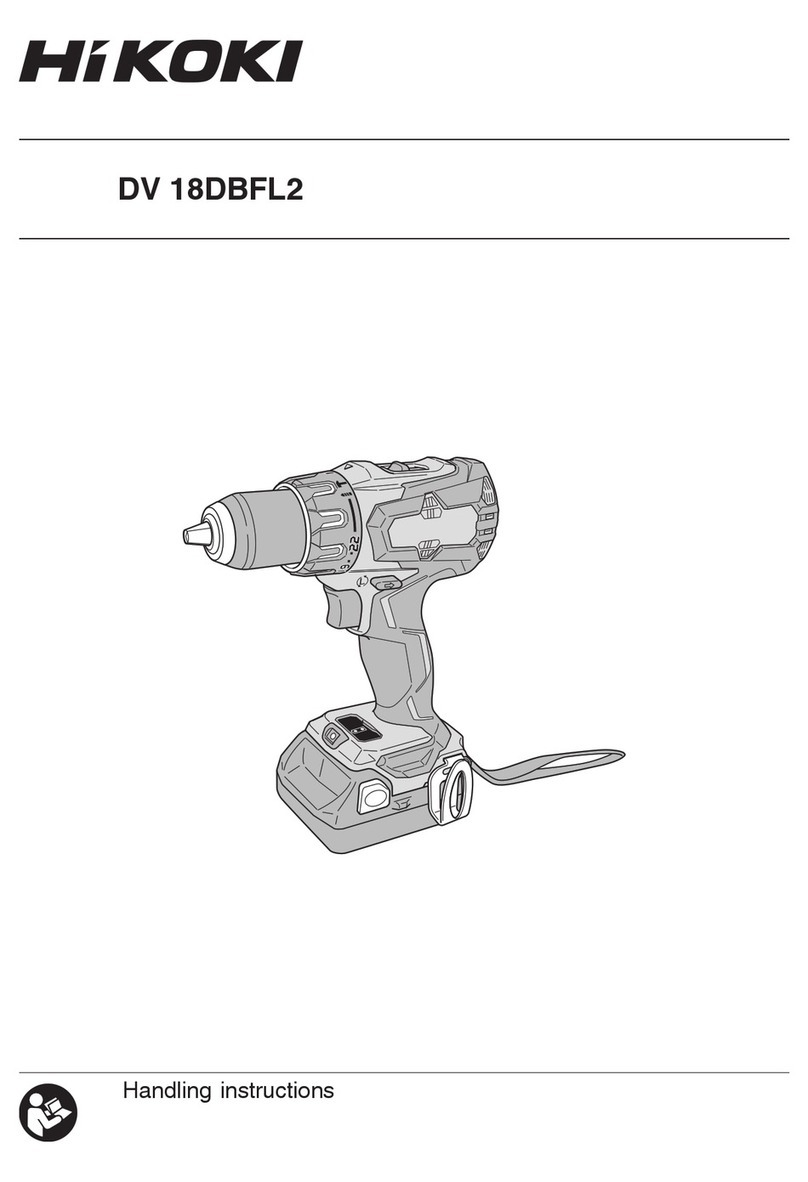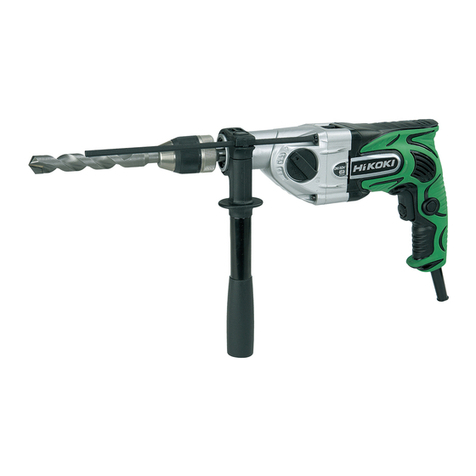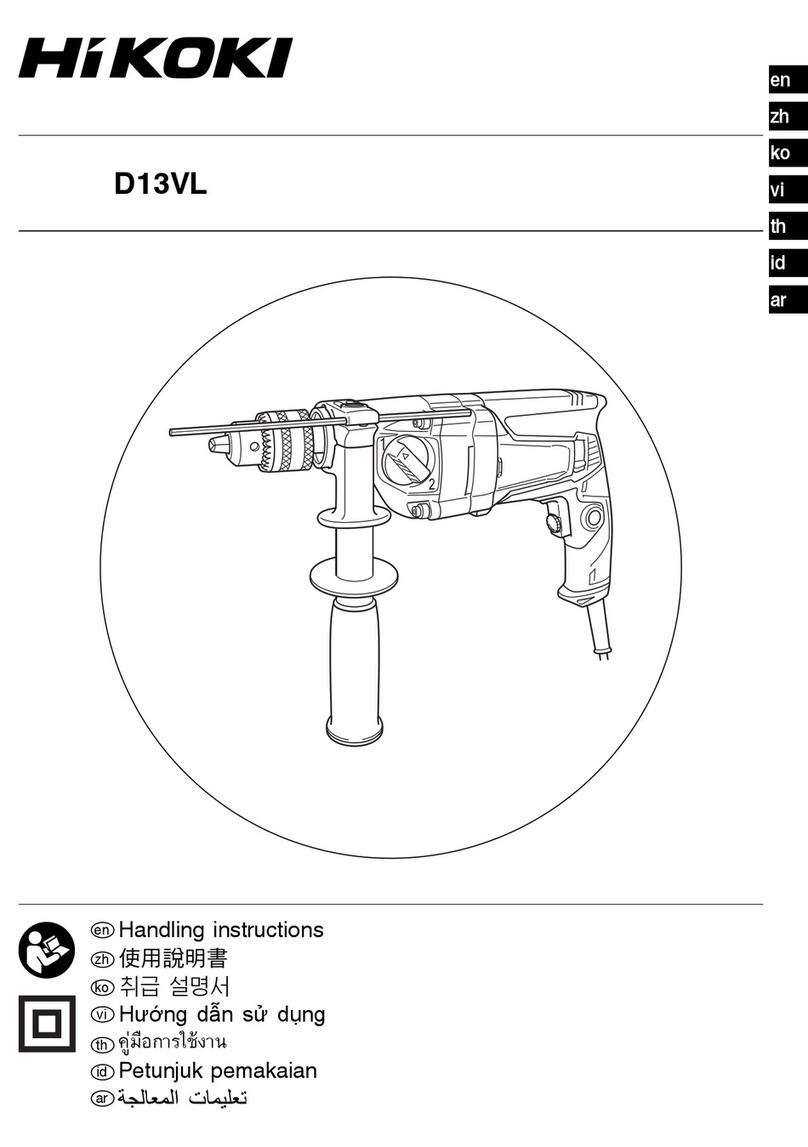
English
7
d) When battery pack is not in use, keep it away
from other metal objects like paper clips, coins,
keys, nails, screws, or other small metal objects
that can make a connection from one terminal to
another.
Shorting the battery terminals together may cause
burns or a fire.
e) Under abusive conditions, liquid may be ejected
from the battery; avoid contact. If contact
accidentally occurs, flush with water. If liquid
contacts eyes, additionally seek medical help.
Liquid ejected from the battery may cause irritation or
burns.
6) Service
a) Have your power tool serviced by a qualified
repair person using only identical replacement
parts.
This will ensure that the safety of the power tool is
maintained.
PRECAUTION
Keep children and infirm persons away.
When not in use, tools should be stored out of reach of
children and infirm persons.
PRECAUTIONS FOR CORDLESS IMPACT
DRIVER (WH14DL2 / WH18DL2)
1. Hold power tool by insulated gripping surfaces,
when performing an operation where the fastener
may contact hidden wiring. Fasteners contacting a
“live” wire may make exposed metal parts of the power
tool “live” and could give the operator an electric shock.
2. This is portable tool for tightening and loosenig screws.
Use it only for these operation.
3. Use the earplugs if using for a long time.
4. One-hand operation is extremely dangerous; hold the
unit firmly with both hands when operating.
5. After installing the driver bit, pull lightly out the bit to make
sure that it does not come loose. If the bit is not installed
properly, it can come loose during use, which can be
dangerous.
6. Use the bit that matches the screw.
7. Tightening a screw with the impact driver at an angle to
that screw can damage the head of the screw and the
proper force will not be transmitted to the screw. Tighten
with this impact driver lined up straight with the screw.
8. Always charge the battery at a temperature of 0 – 40°C.
A temperature of less than 0°C will result in over charging
which is dangerous. The battery cannot be charged at a
temperature greater than 40°C.
The most suitable temperature for charging is that of 20 –
25°C.
9. Do not use the charger continuously.
When one charging is completed, leave the charger for
about 15 minutes before the next charging of battery.
10. Do not allow foreign matter to enter the hole for
connecting the rechargeable battery.
11. Never disassemble the rechargeable battery and charger.
12. Never short-circuit the rechargeable battery.
Short-circuiting the battery will cause a great electric
current and overheat. It results in burn or damage to the
battery.
13. Do not dispose of the battery in fire.
If the battery burnt, it may explode.
14. Do not insert object into the air ventilation slots of the
charger.
Inserting metal objects or inflammables into the charger
air ventilation slots will result in electrical shock hazard or
damaged charger.
15. Bring the battery to the shop from which it was purchased
as soon as the post-charging battery life becomes too
short for practical use. Do not dispose of the exhausted
battery.
16. Using an exhausted battery will damage the charger.
PRECAUTIONS FOR CORDLESS IMPACT
WRENCH (WR14DL2 / WR18DL2)
1. Hold power tool by insulated gripping surfaces,
when performing an operation where the fastener
may contact hidden wiring. Fasteners contacting a
“live” wire may make exposed metal parts of the power
tool “live” and could give the operator an electric shock.
2. This is a portable tool for tightening and loosening bolts
and nuts. Use it only for these operations.
3. Use the earplugs if using for a long time.
4. One-hand operation is extremely dangerous; hold the
unit firmly with both hands when operating.
5. Check that the socket is not cracked or broken. Broken or
cracked sockets are dangerous. Check the socket before
using it.
6. Secure the socket with the socket pin and the ring.
If the socket pin or ring securing the socket is damaged,
the socket may come offfrom the impact wrench, which
is quite dangerous. Do not use socket pins or rings that
are deformed, worn out, cracked, or in any other way
damaged. Always make sure to install the socket pin and
ring in the correct position.
7. Check the tightening torque.
The appropriate torque for tightening a bolt depends on
the material the bolt is made of, its dimensions, grade,
etc.
Also, the tightening torque generated by this impact
wrench depends on the materials and dimensions of the
bolt, how long the impact wrench is applied for the way in
which the socket is installed, etc.
Also the torque when the battery has just been charged
and when it is about to run out are slightly different. Use a
torque wrench to check that the bolt has been tightened
with the appropriate torque.
8. Stop the impact wrench before switching the direction of
rotation. Always release the switch and wait for impact
wrench to stop before switching the direction of rotation.
9. Never touch the turning part.
Do not allow the turning socket section to get near your
hands or any other part of your body. You could be cut
or caught in the socket. Also, be careful not to touch the
socket after using continuously it for a long time. It gets
quite hot and could burn you.
10. Never let the impact wrench turn without a load when
using the universal joint.
If the socket turns without being connected to a load, the
universal joint causes the socket to turn wildly. You could
get hurt or the movement of the socket could shake the
impact wrench so much as to make you drop it.
11. Always charge the battery at a temperature of 0 – 40°C.
A temperature of less than 0°C will result in over charging
which is dangerous. The battery cannot be charged at a
temperature greater than 40°C.
The most suitable temperature for charging is that of 20 –
25°C.
12. Do not use the charger continuously.
When one charging is completed, leave the charger for
about 15 minutes before the next charging of battery.
13. Do not allow foreign matter to enter the hole for
connecting the rechargeable battery.
14. Never disassemble the rechargeable battery and
charger.
000BookWH14DL2Ara.indb7000BookWH14DL2Ara.indb7 2018/02/2210:29:002018/02/2210:29:00
